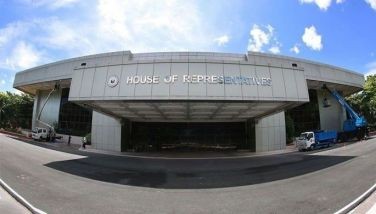The Arab Spring and the world (and Philippine) economy

It is almost two years since the series of events known as the Arab Spring took place. It appears that the Arab Spring of 2011 is just a chapter in the political and economic development of the region. These political changes appear to be like echoes of past events rather than a sharp departure from them. If this is the case, then the more things change, the more they remain the same.
“Events repeating themselves.” The recent version of the Arab Spring marked the loss of political power of long time absolute rulers of Tunisia, Egypt and Libya in quick succession. The civil conflagration in Syria is a continuation of that Arab Spring. As the end-game nears, Syria’s young Assad (who had succeeded the elder Assad his father) is losing grip on power.
Who takes charge after the toppling of the long time ruler is the main question in these countries? The process of weeding out the other players in the revolution after a civil war is often long drawn out. It is full of dangerous twists and turns. It is painstaking institution building. It could end up into a military or a theocratic dictatorship reminiscent of Iran. Or it could finish up a blend of these dictatorships.
Popular democracy has not been the outcome in any of the earlier states that have managed to expel their immediate rulers although often the new succeeding institutions imitate their form and structures. The power struggle for succession is still a game of unknown results.
“Flash points in the world of energy and trade flows.” In general, these events impact on the world through economic outcomes. As a group, the Middle Eastern countries lie on the strategic and vast sources of supply of the fuel for modern civilization – energy. They provide today close to one half of the world’s energy needs.
The Middle East accounts for a large proportion of major political and economic dramas in contemporaneous times. The list of these dramas begins with the war for the birth of Israel as a state (1948) and includes, among others: Suez canal nationalization crisis (1950s); nationalization of foreign oil companies (Iran, Iraq, Algeria, Saudi Arabia, Libya and etc from the 1950s); Iraqi revolution (1960s); 1973 Gulf War (between Israel and its neighbors); Iranian revolution (1970s); Iran-Iraq war (1980s); US invasions of Iraq against Saddam Hussein (1990s and 2000s); and of course the intermittent Israel-Lebanon crisis.
The events that we associate with the Arab Spring of 2011 are part of this chain. They certainly also include the off-and-on shooting wars between Israel and the Palestinians in Gaza.
Also in it is the more fearful and threatening international stand-off related to Iran’s nuclear ambitions. If it is true that that nuclear path leads to the bomb, then more serious consequences are to be expected that alter the regional balance of power.
Today, the problems in the Middle East notwithstanding, the supply sources and trade routes linked with energy are relatively safe for as long as peace reigns.
The protection of the source of supplies of energy from disruption has been the unwritten motivation of the great powers being involved in the politics of the Middle East. The geopolitics of the region involves them all in the contest for economic power. Such power is linked to their need for unimpeded access to energy supplies as well as to protect the critical sea lanes for trade in the region.
The bipolar world of American and Soviet power (which tamed regional geopolitics of the post-World War II years up to the 1990s) is now replaced by a multipolar world involving many powers with the United States still holding the key.
“New normalcy?’” When new events happen for the first time, they bring spark to the prices for energy products due to rising uncertainty and risk. But as time moves on, with the novelty of the impact wearing off, energy prices become more subject to the reality of market forces.
One reason why the world economy in 2012 (and the Philippine economy as a consequence) is not suffering from extreme spikes in the price of energy products despite these unsettling developments in the Middle East is due to the poor state of the world economy today.
The demand for energy is relatively low and the supply of energy has become more diversified and plentiful with new discoveries. The new supplies sourced outside the Middle East are substantial even as the prospects for more oil reserves being uncovered in that region appear to be as promising.
On the demand side, there is sluggish demand for energy because of poor world economic conditions. Economic recovery has been weak from the recession of 2008.
Specifically, US economic recovery has been slow although positive. Europe, the other large economic bloc, is heavily weighed down by the euro problem. China’s growth has been slowing down while Japan cannot get its economy to step up. In China’s case, the main problem is to re-calibrate from growth based on exports to one based on domestic demand.
The result of all these is weak demand for energy from the world economy. However, even as demand for energy is weak, the supply of energy has become more diversified. New supplies have risen from Africa, from the Northern hemisphere in offshore lands and in the Arctic, from Russia and from new sources in Latin America.
To top it all, the United States, which has been in deficit energy supply has become once more self-sufficient and is likely to become a major energy surplus country again. The reason for this is the discovery of new extraction methods for energy driven by the relative highs in energy price that have accumulated over the last few decades. Fracking technology is also getting adopted by new countries.
All these are changing the supply picture. Possibly a new era of more stable oil supplies for the world is in the offing. This does not mean that the Middle East becomes less relevant. It only means there are more suppliers and competition is improving. That augurs well also for the energy future. Middle East oil and energy supplies have lower costs of production than most other sources of supply. They lie on proven areas where the extraction method is so much cheaper.
My email is: [email protected]. Visit this site for more information, feedback and commentary: http://econ.upd.edu.ph/gpsicat/
- Latest
- Trending
































